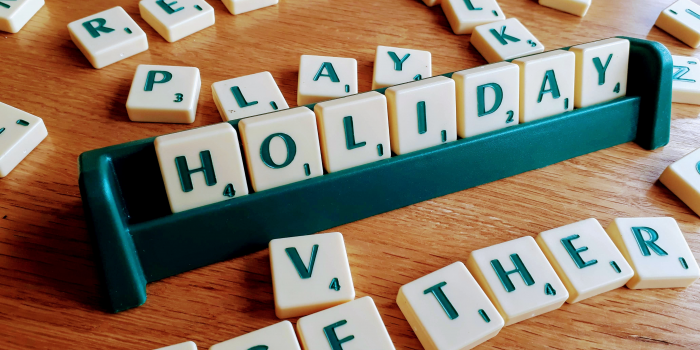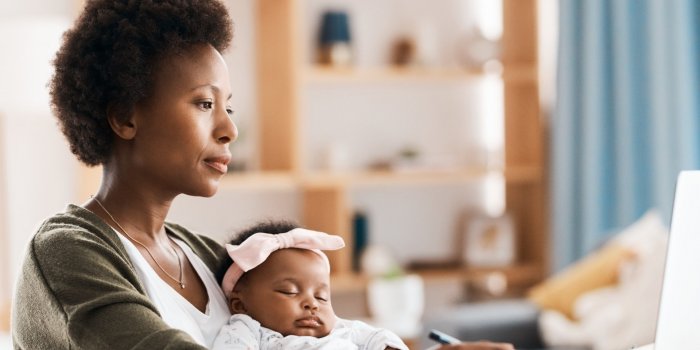The Early Educator's Guide to a Post COVID-19 world

As the COVID-19 situation develops, we at Fyv are working hard to make child care and early education programs more accessible to families while helping early education programs grow. The current health situation has no doubt been difficult for families and providers. For providers, we have put together some guidelines to prepare you for reopening your center and best practices for a post-COVID world.
Background
While there is currently no vaccine to prevent COVID-19, doctors and researchers are learning more about it every day. Here's what we know now and how you can protect your family and others.
Symptoms of COVID-19 range from mild to severe. They generally begin 2-14 days after being exposed to the virus and often include cough and shortness of breath. At least two of these symptoms can also suggest a person has COVID-19: fever, chills, repeated shaking with chills, muscle pain, headache, sore throat, and a new loss of taste or smell.
Although COVID-19 is a new disease, it belongs to a family of coronaviruses that usually cause illnesses like the common cold. As the virus spreads, we see many people with mild symptoms, but others who get very sick and need to be cared for in a hospital.
What ECE providers can do to navigate a post-COVID-19 world
Employee Training
Providing training on COVID-19 will be essential. Child care program administrators and educators should train employees/colleagues on the following:
- Information related to COVID-19 from the Centers for Disease Control and Prevention (CDC)
- How COVID-19 is spread.
- Preventing the spread of COVID-19 if you are sick.
- Symptoms of COVID-19 and when to seek medical attention
- The importance of frequent handwashing with soap and water (or using hand sanitizer where soap and water are not available), including
- When employees arrive at the facility and before they leave the facility.
- Before and after handling food, feeding a child, or eating.
- Before and after using the toilet, changing a diaper, or helping a child use the bathroom (also wash the child’s hands after helping the child use the bathroom or changing their diaper).
- After helping a child wipe their nose or mouth or tending to a cut or sore.
- After working in sandboxes and similar children’s play areas.
- Before and after giving medicine to a child.
- After handling wastebaskets or garbage.
- Implement Methods to avoid touching eyes, nose, and mouth.
- Limiting close contact with others as much as possible and maintaining more than six feet of separation.
- Coughing and sneezing etiquette.
- Safely using cleaners and disinfectants on surfaces and objects, which includes:
- Wearing personal protective equipment (such as gloves).
- Ensuring cleaners and disinfectants are used safely
- Establishing a schedule to deep clean each classroom at the end of the day.
- The importance of not coming to work if they have a frequent cough, sneezing, fever, difficulty breathing, chills, muscle pain, headache, sore throat, or a recent loss of taste or smell, or if they or someone they live with has been diagnosed with COVID-19.
Implementing New Methods and Policies
It's that time! Whip out your policy handbook. Child care programs and preschools should establish and implement procedures to help prevent the spread of COVID-19 such as:
- Establishing a plan for sharing information and guidelines with parents and guardians that includes:
- A system to check with parents and guardians daily on the status of their children when children are dropped off at the facility. (For example, daily reports to be sent at pick up.)
- Ensuring information and communication can be provided in the primary languages spoken by the parents and guardians.
- Ensuring all contact information including email addresses and phone numbers from parents and guardians of children are up to date at the facility so the facility can reach them at all times.
- Revisiting and brushing up your sick policies and communicating with parents and guardians that children should stay at home if they are sick, have been in contact with someone who has tested positive for coronavirus, or if someone in the household has symptoms (cough, fever, shortness of breath).
- Thinking about drop-off and pick up procedures:
- Establishing methods for parents and guardians to help screen their children for flu-like symptoms. (For example, asking parents and guardians to take their children’s temperatures every day before coming to child care and to keep their children at home if their temperature is over 100.4°F.)
- Establishing your own methods to screen children and employees every day before coming into school. Think about where this would occur? Outside? Inside?
- Think about whether you need to hire a staff member just for coordinating drop off and pick up.
- Consider establishing a staggered drop-off/pick up times by classroom or age group so that not all families show up at once.
- Establish a plan for children who become sick at the facility. The plan should include:
- Procedures for contacting parents and guardians immediately and processes for seeking medical assistance.
- Designated areas where sick children can be isolated and attended to.
- Establish procedures to routinely clean and disinfect frequently touched surfaces and objects (e.g., doorknobs, light switches, classroom sink handles, countertops, shared toys). (For example, setting a soft alarm to remind you to disinfect and clean every 30min)
Educational Resources and Classroom Procedures
Establish a curriculum and educational methods to inform children on how they can help prevent the spread of COVID-19, including:
- Taking time to plan lessons for your students including lessons on:
- Personal hygiene
- Frequent hand washing.
- Learning about COVID-19 and transmission
- Discouraging children from sharing food, drinking cups, eating utensils, towels, toothbrushes, etc.
LESSON EXPERIMENT: Make germs scatter with soap!
- Lessons on personal health
- Telling their teacher as soon as possible if they feel sick.
- Coughing and sneezing etiquette (cover coughs and sneezes with a tissue or sleeve; not hands).
- Designating classrooms to adhere to social distancing
- Using colorful painters tape to create lines and squares for distancing.
Be Prepared
If there is anything we know about COVID-19, its that it's full of surprises.
- Create a plan should another shutdown occur
- Distant learning, such as online lessons, virtual circle time
- Developing a school YouTube channel with different classes as playlists
- Keeping communication strong with parents through a newsletter.
- Developing at home lesson plans and curriculum kits.
Offering Support for Parents
The economic impacts of the pandemic on households’ income will strain parent’s capacities to invest in their children. Loss of work, costs of caring for a loved one or general coping with COVID-19 could put financial pressure on parents that could hinder their ability to afford/continue to afford adequate childcare and education during and post-pandemic.
Consider partnering with Fyv to help your families afford child care. Fyv is essentially the financial aid department for child care and preschools. We increase access to high-quality early education programs by connecting parents with payment plans and grants. If you would like to learn more about partnering with us, say hello.




